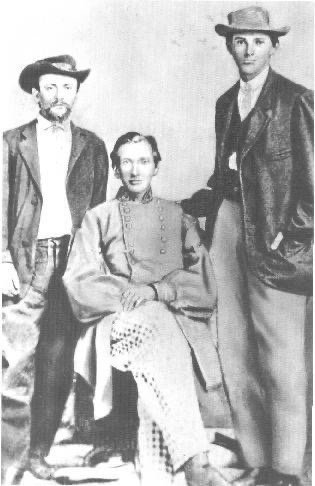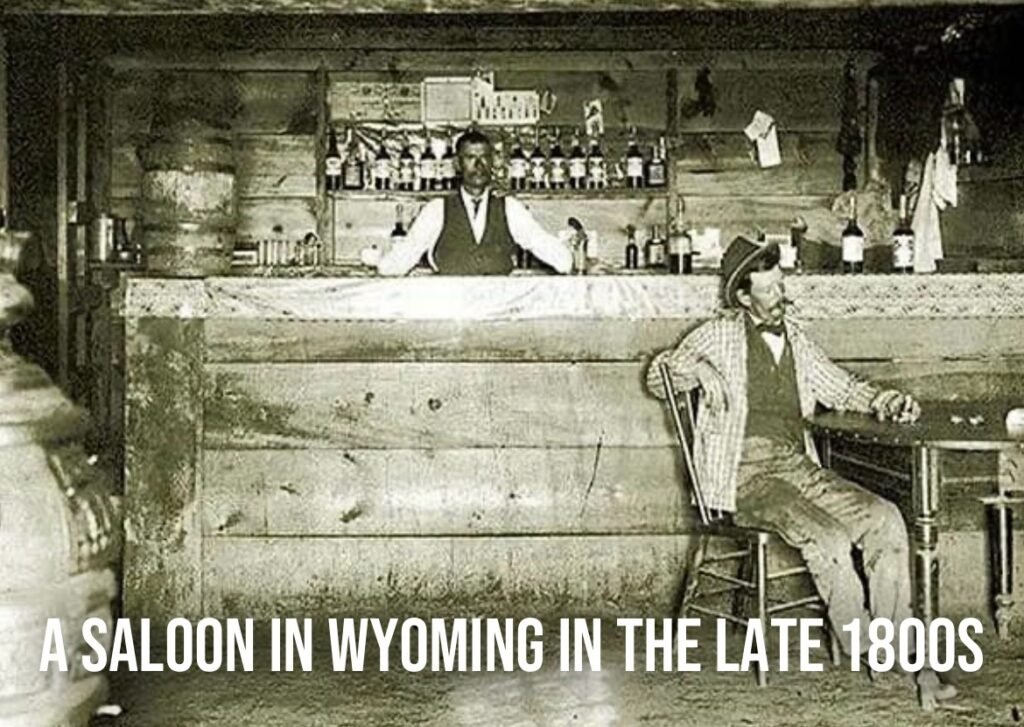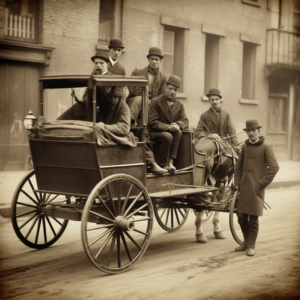In the spring of 1875, the infamous Jesse James, along with his gang, found themselves in Joplin, Missouri. This wasn’t just a random stopover; it was a town of significant importance to them, largely due to Jesse James’s connection with Fletch Taylor, a key figure from their past.
The Connection to Joplin: Fletch Taylor’s Influence
Fletch Taylor, a former leader in Quantrill’s guerrillas during the Civil War, had moved to Joplin in the 1870s. Both Frank and Jesse James had served under Quantrill, and this shared history with Taylor gave them a connection to Joplin. It’s likely that Taylor’s presence in the town made it an attractive spot for the James gang, possibly serving as a safe haven or base.

A Fateful Encounter with a Young Banker
One night, Jesse James and his gang crossed paths with a couple of local sports, including a young and popular banker, the cashier of the Joplin Savings Bank. The banker, unaware of the true identities of his companions, boasted about a recent deposit at his bank: $10,000 in silver and $25,000 in gold.
As the night wore on, the banker realized he was in the company of the notorious Jesse James. Struck by panic and recalling his earlier revelation about the bank’s holdings, he feared the worst. However, Jesse James’s response was unexpectedly reassuring. He told the banker not to worry about the money, claiming that Joplin was their hometown and they wouldn’t rob a bank there. He even joked about depositing some cash but cautioned the banker to keep quiet about their conversation.
Joplin as a Refuge for the James Gang
The James gang had made a temporary home near Joplin, residing in a cave close to the small mining town of Belleville. Despite their fearsome reputation, they seemed to adhere to a rule of not robbing banks or causing harm in the area that they considered their headquarters. This unspoken rule might have stemmed from their connection to Fletch Taylor and the sense of Joplin being a refuge.
The Photo: A Snapshot of History
The story is encapsulated in a photograph showing Frank and Jesse James with former Joplin City Council Member Charles Fletcher Taylor. This image serves as a historical snapshot, capturing a moment in time where notorious outlaws and local figures intersected in the tapestry of the Old West.

The Life and Legacy of Jesse James
Jesse James, a figure shrouded in myth and legend, remains one of the most iconic outlaws of the American Old West. His life was marked by bank and train robberies, daring escapades, and a reputation that has made him a subject of fascination for generations. Let’s explore more facts about Jesse James to understand the man behind the legend.
Early Life and the Civil War
- Born in Missouri: Jesse Woodson James was born on September 5, 1847, in Clay County, Missouri. His upbringing in the border state, which was deeply divided during the Civil War, significantly influenced his later life.
- Guerrilla Warfare: As a teenager, Jesse joined pro-Confederate guerrillas known as “bushwhackers” during the Civil War. Under leaders like William Quantrill and “Bloody Bill” Anderson, he learned guerrilla tactics and participated in violent raids against Union forces and sympathizers.
The James-Younger Gang
- Formation of the Gang: After the Civil War, Jesse, along with his older brother Frank James, formed the James-Younger Gang. They were joined by the Younger brothers – Cole, Jim, John, and Bob.
- Notorious Robberies: The gang was responsible for a string of robberies from Iowa to Texas and from Kansas to West Virginia. They robbed banks, stagecoaches, and even trains, a relatively new target for outlaws at the time.
The Man vs. The Myth
- Robin Hood Image: Jesse James was often portrayed as a sort of Robin Hood figure, robbing the rich and giving to the poor. However, there is little historical evidence to support this image. Much of this legend was crafted by John Newman Edwards, a former Confederate cavalryman and newspaper editor who glorified James’s exploits.
- Public Fascination: Despite his criminal activities, Jesse James became a folk hero in American culture. His ability to elude capture and his daring robberies captured the public’s imagination.
Death and Legacy
- Betrayal and Death: Jesse James’s life of crime came to an end on April 3, 1882, when he was shot in the back of the head by Robert Ford, a member of his own gang. Ford hoped to claim the bounty placed on James.
- Legacy: After his death, Jesse James became a legendary figure of the Wild West. His story has been the subject of numerous books, movies, and songs, cementing his place in American folklore.

Jesse James’s life was a blend of fact and fiction, marked by the tumultuous times in which he lived. From his early days as a Confederate guerrilla to his later years as a notorious outlaw, his story is a captivating chapter in the history of the American West. His legacy continues to intrigue and inspire, a testament to the enduring allure of the outlaw in American culture. 🌟🏦🐎📚🎬
The story of Jesse James in Joplin is more than just a tale of outlaws; it’s a glimpse into the complexities of loyalty, camaraderie, and the unwritten codes of the time. It shows how personal connections and a sense of belonging could influence even the most notorious figures of the era. The events in Joplin, the encounter with the young banker, and the presence of Fletch Taylor all paint a vivid picture of life and relationships in the Wild West.
As an Amazon Associate we earn from qualifying purchases through some links in our articles.




